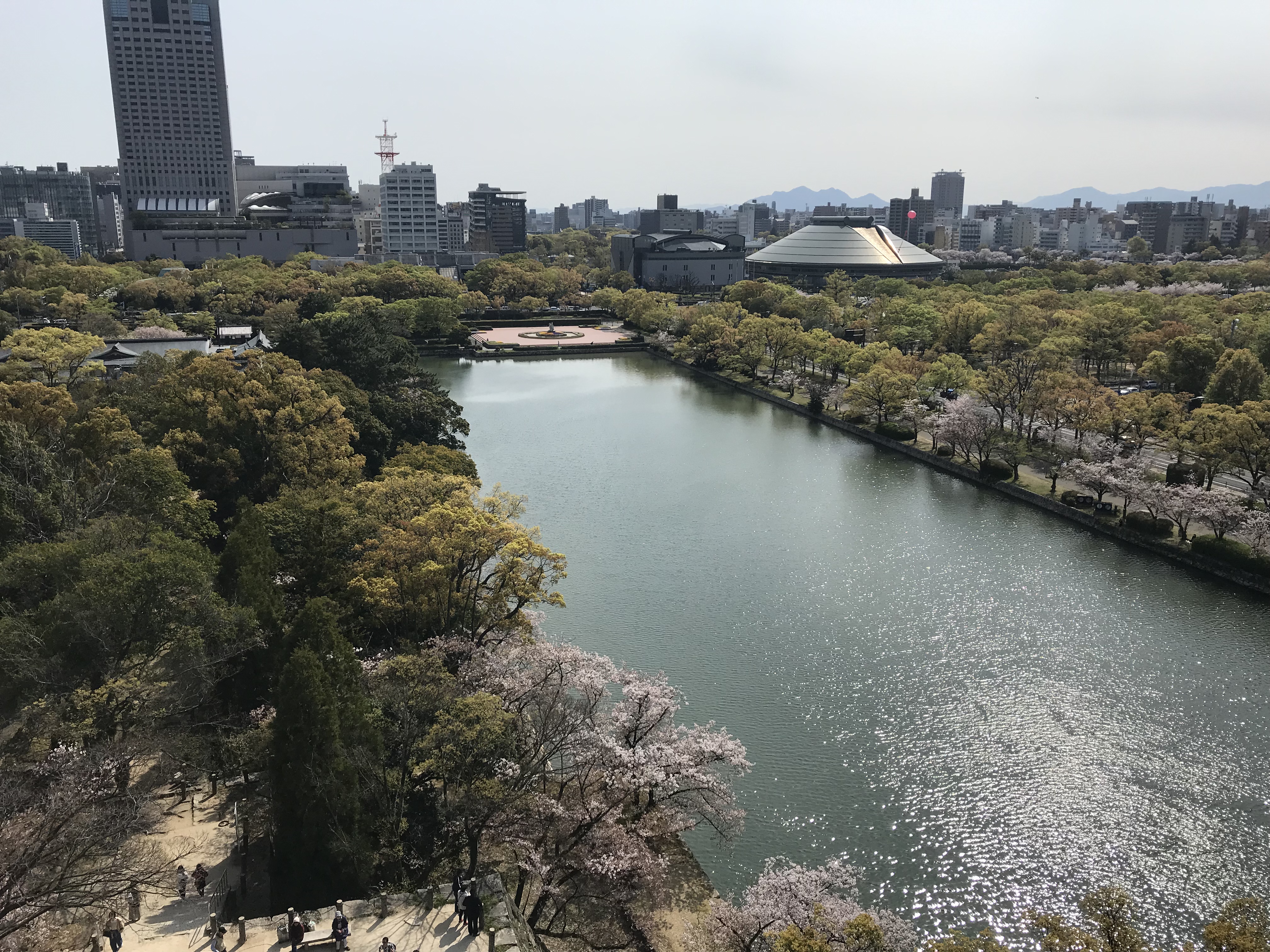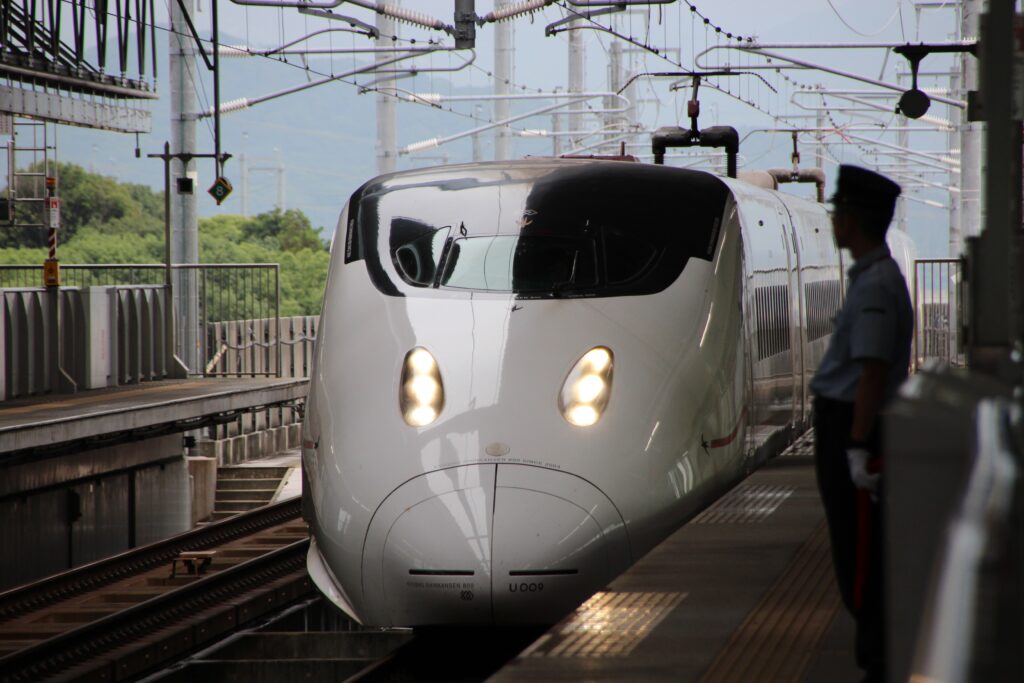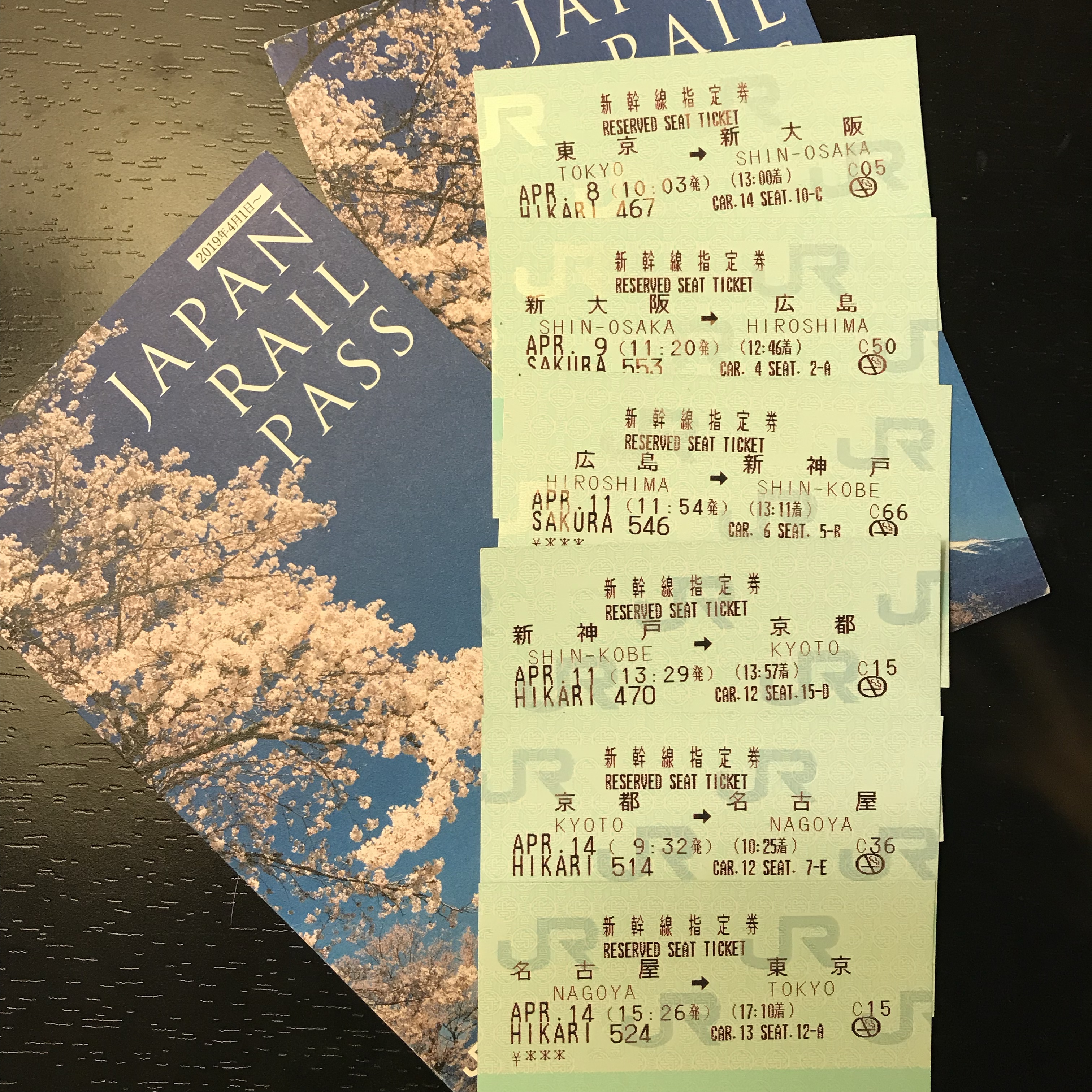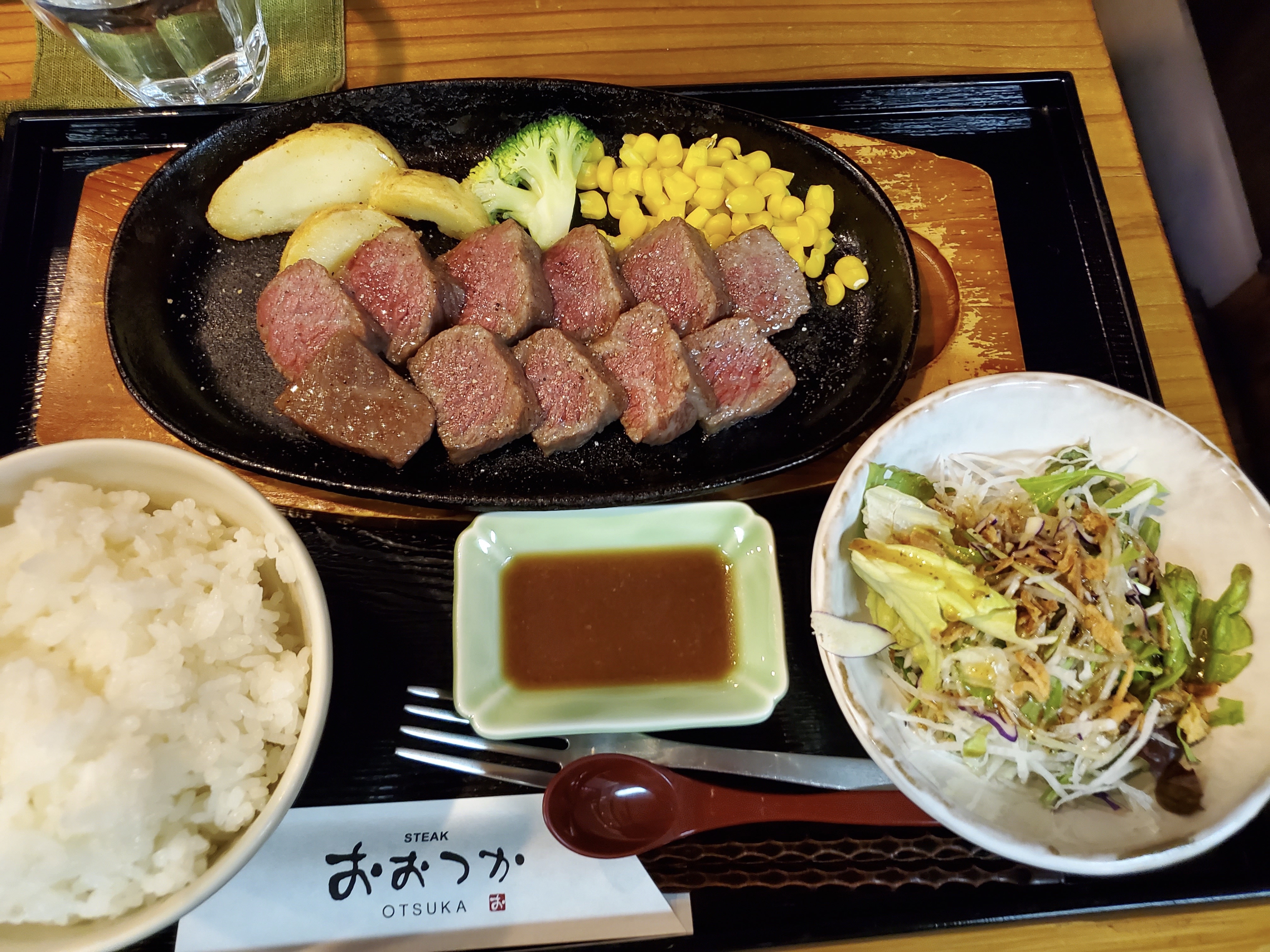japan: local transit travel guide, the jr pass, trains, and shinkansen;

JR Pass
What is a JR Pass? A travel pass for Japan Rail (JR) Lines. This is a travel pass that can be purchased in 7-day, 14-day, and 21-day varieties. You MUST purchase and internationally ship/receive the pass before arriving in Japan, then will need to activate it in Japan.
What does the JR Pass cover? Not all transit will be covered by the JR Pass. The benefit of the JR Pass is really being able to ride Shinkansen. If you’re unfamiliar, these are the fast bullet trains that you’ll most likely be taking between the different cities and areas you’ll be visiting, and typically the most expensive public transit. The JR Pass is also valid on any local JR line trains, the N’EX (Narita Airport Express) and the JR Ferry to Miyajima (island off the coast of Hiroshima). The pass is useful in a lot of areas, however, it’s important to note that unlike DC/MD/VA’s WMATA that let’s you ride on the metro and buses, the JR pass will not cover all trains and buses in Japan. Think more like NYC’s LLIR, NJTransit, NYC Metro–a ticket for one is independent of the other lines. In addition to JR lines (includes all Shinkansen, and local JR lines) there are a variety of private rail lines that are NOT valid with a JR Pass (e.g. Hankyu, metro lines, etc). If you’re using google maps, JR lines are pretty clearly marked with a two letter code that starts with “J”, while others have different (or no) standards. If there’s any confusion, wave your pass at the workers manning the gates and they’ll wave you on or tell you no if it doesn’t work. Easy enough.
Can I ride any Shinkansen with a JR Pass? The JR Pass is valid only on Hikari, Sakura, Kodama, Tsubame Shinkansen. It is NOT valid on Nozomi or Mizuho Shinkansen. What does this mean? They’re all Shinkansen, but the names indicate the type of train. The trains that can be ridden: Hikari, Sakura, Kodama, and Tsubame are the slower, older trains, but plenty reasonable for tourist travel. The ones not included tend to be the faster, commuter trains. You can independently purchase tickets for any of these, but only the listed 4 are valid for free within the dates of your JR Pass. It’s important to note that there can be differences in travel times even among the valid JR Pass trains. For example if traveling from Kyoto –> Tokyo, a Kodama train can take 222mins where a Hikari can take 161mins. I generally recommend avoiding Kodama trains wherever possible to minimize travel time.
What’s the difference between non-reserved and reserved seats? Reserved seats ensure you have a seat, but require booking at a travel office ahead of time. Non-reserved seats are filled on a first-come first-serve basis, but provide flexibility. A JR pass includes option to book reserved seats, or use the non-reserved seats. All Shinkansen available JR Pass holders have a certain number of non-reserved cars. That means any JR pass holder can find a seat on a first-come first-serve basis. The remaining cars are for ticketed passengers only. Upsides to non-reserved seats include not being tied to a schedule, or can be used if you miss a train you had a ticket for. On the flip side, you can find yourself standing on long rides, especially if your stop is not the initial departure station for that train.
Should I reserve seats? I recommend it, but is not required. I recommend booking reserved seats. We did this for our trip so we knew which trains to take and we knew for certain we wouldn’t have to stand or fight people for seats. Occasionally some non-reserved people will encroach on reserved seats in cars so if you find someone in your seat, politely show them your ticket and tell them you reserved the seat. They should move. Also note that if you miss a train with your reserved seat, you’ll need to take another train as a non-reserved passenger.
You can book seats at any time for valid dates within your pass’ specified dates. Said another way, once you activate your pass and it has printed dates of validity, you can book tickets that fall within those printed dates, even if it’s not that day yet. Especially if you plan ahead this means you will definitely have a seat, but also means you’ll need to plan in advance.
How do I book a reserved seat? Visit a JR Ticket Office (Midori-no-madoguchi) and bring your JR Pass. Safe to say you’ll find ticket offices at most large train stations, but you may need to account for long lines. A quick online search should tell you where offices are located for the city you’re in, and which will be most convenient for you. Technically all you need is your JR pass, however if you would like to streamline the process, here’s what I suggest. Write down on a piece of paper the following for each ride you’d like to take:
- Date
- Departing location
- Arrival location
- Approximate time you’d like to leave
- Preferred train & train number (use hyperdia.com to check specific trains and write down the actual train you’d prefer e.g. HIKARI 476)
Pro tip: Writing this out ahead can make your booking easier, especially when there’s long lines! For example, because we were super prepared with the above list, in Hiroshima there was a long line but they booked 3 trips for us despite a sign “we will only book two tickets for you in courtesy of the line.”
How do I use hyperdia.com? This website is the go-to for train and travel schedules. This is the best way to look up Shinkansen travel and prices, although it does include other transit systems. You can do a more granular search on routes to travel if you’re interested, but I tend to use it specifically for Shinkansen travel which will be from the largest stations, typically named for the city they’re in. For example, I can use this site to map a route to Kyoto from Kinshicho, a local stop near our hotel in Tokyo, but I will usually just search Tokyo to Kyoto, and worry about local travel later. To use the site, browse to hyperdia.com and find the “Timetable and Route Search” box in the upper left corner. Fill out the “From” and “To” fields, which should auto-populate with stations as you type. Fill out date/time information as needed. If you are using a JR Pass, expand “More options” and uncheck “NOZOMI / MIZUHO / HAYABUSA SHINKANSEN” before hitting Search. This will ensure you’re only looking at shinkansen valid with your JR Pass.
When should I reserve my seat? Don’t wait until the last minute to reserve! Given our experience in April, I recommend 2-3 days before the day of travel, although I think you can reserve seats up to a month out. However, things like busy times and seasons and popularity of route will affect availability. The only route we had an issue with was Hiroshima to Kyoto, where we had hoped to leave ~10am, and had to wait until ~12pm for reserved seats. It worked out fine for our schedule, but building a little flexibility into your itinerary can help in situations like these. If you have a JR Pass, you can purchase reserved seats for within the dates of your JR Pass. E.g. if today is April 7, and your pass is set for April 10-April 16, you can book tickets for anytime within April 10-April 16 today. The JR Pass also offers some more flexibility for situations when you’re unable to reserve seats: you can try the non-reserved cars. It may not be the most comfortable trip because you’re not guaranteed a seat, but you can still catch a specific train so that you arrive at a specific time if your itinerary demands it. Expect to make reservations once you get to Japan. The only exception I know of is JR East Trains that have an English online reservation system. However, I have never used it so can’t offer specific advice on this option.
Is a JR Pass worth the price? Maybe, maybe not. At this time, a 7-day pass is $260, 14-day $415, and 21-day $732. Check out an online calculator like this one to determine whether a JR pass is worth the cost. It most likely depends on how many cities you’re traveling to within the JR-pass 7/14/21 day timeframe you choose to purchase. The bulk of the value comes from Shinkansen travel which can cost thousands of yen per trip, but the JR Pass does include things like local JR trains (average 500yen or less) and the Miyajima Ferry (360yen round trip). You can of course maximize your value by coordinating local trips to only use JR lines since those are free with the pass, but I like to just consider that bonus and focus on the Shinkansen tickets. You might be surprised to see how far you have to travel to make the pass worthwhile. If you’re only staying in 1-2 locations, consider local tourist day passes, and even if you have a JR Pass or are in a city outside of the valid dates of your pass, you may want to scroll down to the “Paper Train Ticket” section.
How do I activate my JR Pass? You will need to exchange your voucher at a JR Office. We chose to activate our passes at Narita Airport while purchasing NE’X tickets. You can select dates in the future to activate your pass, which means the pass is not valid until those days. The NE’X is the Narita Express and will get you from Narita Airport to Tokyo station, which is the central hub from which you’ll probably continue to your destination via local lines. The N’EX train is only covered during the “active” part of your JR Pass. I.e. you land on April 10 at Narita and want to go to Tokyo station, but your pass is valid starting April 12. You would need to pay for a N’EX ticket. We suggest activating your JR pass and purchasing a N’EX ticket at the same time in the airport, however there can sometimes be a wait, where you might have more luck at other stations.
How do I purchase a JR pass? Check out the Japan Tourism Board website to purchase your pass. There may be other vendors available, but JTB is the standard I have used, and can vouch for their authenticity. At the time of this post, from JTB a 7-day pass is $260, 14-day $415, and 21-day $732. It is required to be purchased ahead of time, and it is REQUIRED to be acquired internationally whether that be by shipping or pickup at specific branches within the US, so you’ll need to plan ahead of time. You cannot purchase a pass more than 90 days out from the intended start date of the pass.
Pro-tip: If you are interested in visiting the Studio Ghibli Museum in Tokyo, you can purchase tickets together with a JR Pass from JTB. See this page for more information, and note that this museum is crazy popular so buying tickets can be hard. Buying together with your rail pass is probably the easiest option, but even then you have to provide up to 3 dates and they will inform you which (if any) they are able to reserve for you.
Can you eat on trains? Shinkansen yes, anywhere else, no. This is more of a cultural question. No one will arrest you if you eat on a metro train, but you’ll get some weird glances and you’ll very rarely, if ever, see natives eating on a train. The one exception is the Shinkansen where it is culturally encouraged to bring and eat bentos and snacks, and they typically have a cart that passes through the cabins with snacks and drinks.
Do I need to worry about timing and rush-hour? Yes in major cities along major routes, but as a tourist you probably have more flexibility to plan around rush hours. We found for Shinkansen travel, 10am-12pm were ideal times for departure, letting us travel on local lines to the departure station at the end or after rush hour, and not have to worry about overcrowded trains, especially when we had large luggage.
How do I use my JR pass once it’s activated? You flash your pass, with the active dates visible to an attendant at the turnstiles. You won’t feed the JR pass, which is card-like and vaguely passport-sized into the turnstiles. There should always be an attendant at one of the turnstiles, so show them your pass with the date facing them and they should wave you through. You’ll need to show it at the turnstile going into the train station and out of the train station. Keep in mind that busy stations may have a brief wait if the attendants are talking to other people or there may be signs to specific JR exit lanes because of high traffic. Just keep an eye out for signs, and don’t swipe in with an IC Card or buy a ticket to get in when you’re trying to use your JR Pass.
What if I lose my JR Pass/IC Card?Don’t lose it. JR Passes can’t be reissued if lost or stolen, so it’ll be wasted money. There may be a chance you can reissue an IC Card, but it will depend on the regional card, the type of card, and access to a location to reissue it. So…don’t lose it.
What kind of luggage space is available on Shinkansen? Overhead racks, and small areas under the seat in front of you for small bags. Oversized luggage needs to be stored in areas by the door. You can lock it in these areas but can be a little crowded when people get off at a stop, or if you forget the combo you’ll need to ride all the way to the terminal location to pick up your baggage. Generally recommend keeping luggage to a minimum, and we never had an issue with two backpacks and two carry-on size suitcases with wheels.

IC Cards
What is an IC Card? Stands for Intelligent Card. It’s a plastic refillable debit-card that you can tap at turnstiles for public transit areas rather than purchasing individual tickets and feeding them through the turnstiles to get on and off a train. When the JR Pass doesn’t cover a train line or you’re not purchasing a JR Pass, your backup should be an IC Card. This is the equivalent of a metro card in NYC or a SmartTrip card in DC/MD/VA. Which also means less time reading Japanese maps to figure out your fare, less time spent buying a ticket when you’re running for a train, and less time worrying you’ll lose your ticket between getting on at one station and off at another.
Is an IC Card valid everywhere? As of recently, yes! Lucky for you Japan has recently (like last year, 2018 recently) integrated all their IC Cards so you can use one card in every city you visit. It used to be that each city had its own version, i.e. Manaca was used in Nagoya, Icoca was used in Kansai (including Kyoto, Osaka) and they would not work in other areas. My theory is they’ve been working on transit and making things easier for tourists for the 2020 Olympics but who knows if I’m right. Doesn’t matter, lucky for you they all work everywhere now which makes your life as a tourist a breeze! The 10 interchangable cards are: Suica, Pasmo, Icoca, PiTaPa, Toica, Manaca, Kitaca, Sugoca, Nimoca, and Hayakaken.
How do I purchase an IC Card? You can purchase them ahead of time, or visit a vendor in the first city you visit once in Japan. On this latest trip, we bought 2 suica cards ahead of time from this website and used them invaluably throughout our entire trip. Suica are the Tokyo area metro cards, and since I imagine the majority of people will spend the beginning of your trip in Tokyo thanks to the two airports, it seems like a good choice. You can actually use IC cards like debit cards at a lot of vendors, so it’s a valid option to load them up and try to use them for more than just transit. You’ll often see little “we accept IC card” signs with all the little mascots for the various cards at vendors, like ice cream stands or little coffee shops, etc. We opted to use ours only for transit because otherwise it was one more stash of money in addition to cash and cards to keep track of, but you may find it more convenient me.
How do I use an IC card to ride a train? You tap it to enter a turnstile and tap it to exit a turnstile. You’ll usually see a pad that says IC on a turnstile, or if you’re having trouble, just watch others for a quick second before going through. There are sometimes a few turnstiles that have ticket feeders and no IC card, so just make sure you pick the right one! Myself and most native Japanese will shove their cards in their phone or wallet and not even pull them out to tap against the reader. I’m sure it depends, but I’ve had only good experiences with my card easily read when it’s in a reasonable position close to the top layer of my wallet or phone. Plus you’ll look like a pro who knows what they’re doing and can laugh at all the ticket-tourists.
How do I use an IC card to ride a bus? You tap it when exiting a bus. See the buses section for more information.
How/where do I recharge an IC Card? You can recharge at any station ticket machine that bears the IC card symbol. You’ll find these ticket machines by the same machines used to purchase paper tickets, and also by the exit turnstiles in case you need to recharge before you exit. Now that Japan has integrated all of their IC Cards, it’s quite easy to recharge and add money to your card. When in major cities, you can probably do so in English, so it may be worth it to practice once and get the feel of it if you’re planning to spend time in more rural areas. It’s pretty straight forward, insert your card, select an amount to recharge, and insert money. It’ll spit you back change and your IC card, and you’re good to go!
Help! My IC Card isn’t working and says “error” every time I swipe in or out! Just take it to the nearest attendant and ask for help. Errors don’t happen very often, but when they do, it can be a little alarming. Usually it’s a simple thing like you swiped in and it didn’t register your swipe out. Since you can use the card with multiple rail lines, if something on your card gets out of whack with one rail line it can affect your use on the others. But don’t worry, you can always buy a paper ticket until you’re able to get it fixed. For example, we never swiped out of a JR line with our Suica (flashed the JR Pass instead), and when we next tried to use the card for the Hankyu rail, our Suica wouldn’t work until we went back to a JR station and had them reset the card. Because Hankyu and JR lines are separate companies, they can’t tamper or fix the other’s data.
Local Buses
How do I pay to ride a bus? You tap your IC card on a pad, or provide exact change to the fare machine. My experience with buses on this past trip was limited to Kyoto, so I did a little research to get the full picture. Within Tokyo’s 23 wards, you pay the bus fair when entering from the front door. Outside of Tokyo you do not pay when entering from the back of the bus, but pay when exiting the bus. For Kyoto buses, when you exit out the front, you’ll need exact change. I believe there’s a change-making machine from bills if you don’t have the required change, but we never used them and opted to use our IC Cards. On certain lines or in certain areas, using an IC card can get you a very minor discount on fares.
Are there any special bus tickets? Some cities have daily passes that may be a worthwhile investment. For example, Kyoto has a one-day bus pass that cost 600yen, when each ride on the bus cost 210yen. Otherwise, you’ll pay your fare in change.
How do I know to get off? I can only answer for Kyoto: most buses will have screens with the name of the stop. The buses in Kyoto we rode had English and Japanese screens and also announced the next stop. Funnily enough, I usually found the “English” versions to be way less understandable than the Japanese version. If you’re sticking to major areas I imagine it should be fairly easy. If we were traveling to more rural areas I might write down the location or bring a map to show the bus driver so they can help you out.
How do I indicate I want to get off? Press one of the ‘stop requested’ buttons. There will be buttons scattered throughout the bus, on top railings, by seats, and lower railings. There should be some ‘ding’ or audible acknowledgement of the button being pressed. Once it has been pressed the button or a light near each button should light up, but it doesn’t harm anything to press it again if you’re not sure if someone else pressed it or not.

Paper Train tickets
When should I use a paper ticket? It varies. For example, at the end of your trip when you don’t want to fill your IC card you may want to buy just a single ticket. Or, as we did in Osaka, if you have an issue with your IC card and it won’t let you swipe into a rail line, a paper ticket can be a backup until you can get to the rail station of the line where it errored. In Osaka, we never swiped out with our Suica (flashed our JR pass), and the messed up data would not allow us to use the card to swipe into the Hankyu rail. Rather than waste 30 minutes walking back to the JR station and then returning, we bought a paper ticket and fixed our cards next time we were at a JR station. Or maybe you just want the fun experience of feeding your tickets to the turnstiles! There’s something satisfying about having a paper ticket and watching it ka-chick-ka-chick through the turnstile.
How do I purchase a paper ticket? Fares are distance based, so you’ll need to look at a map at the station. There are typically maps with fare prices near the ticket machines. There will typically be an indication by size or color for your current station, and then you’ll search for your destination. Once you identify your destination, there will be a number at that station, probably somewhere between 150yen – 500yen on average, and that’s the amount you pay for your ticket. Feed money into the ticket machine and press the button for the price and it should spit out your change and a ticket. In more tourist-traveled areas, you may even be able to figure out the fare on the machine itself by plugging in your destination and it will tell you what ticket to purchase, but that option isn’t always available, nor guaranteed it’ll be in English.
How do I use a paper ticket? Feed it into the turnstiles at the station. Feed it into the little slot, it’ll chug a chug and pop out with a hole punch. Grab this and keep it on you. When exiting, assuming the fare is correct, you feed it into a similar little slot, it’ll chug and chug and you walk through (it eats the ticket). If an issue occurs, small gates will close and make angry noises at you and pop your ticket back up. If this happens, grab your ticket and talk to the attendant.
What if I bought a ticket and don’t use it? They’re not time or date specific, so you can use it another time. Your ticket is still valid, as there are no limits on date and time to use a paper ticket to my knowledge. They are still valid only for the rail line you purchased them for. I’ve never tried expressly, but I can’t imagine a Hankyu rail ticket is good for JR lines.
What if my paper ticket doesn’t cover the full fare? Take it to the station attendant and pay the difference. If you want to use a ticket that doesn’t cover your full fare, take it to the attendant on the way out, tell him where you came from, and pay the difference. I’ve never tried to use an over-paid ticket, but I imagine it’ll probably eat it and you’ll lose the difference unless you talk to a station attendant.
What if I lose my paper ticket? See the attendant and be prepared to pay whatever they make you pay. They may require you pay the maximum fare.
General Transit
Should I stay in places that are easily transit accessible? My recommendation is yes. Firstly, it’s not that hard to do. Secondly, as a tourist you probably want to do the touristy things that are easily accessible by public transit. In my personal opinion I would not want to drive in crowded Japanese cities when public transit is so easy and accessible.
Should I look at transit day passes? You absolutely should look into options for cities you’re visiting outside of your JR Pass’ valid dates, or if you’re not purchasing a JR Pass. Places like Tokyo and Kyoto will most certainly have day passes available, but you’ll have to research them to see how to buy them, what they cover, and whether they’re monetarily and convenience-wise worth it. The only one in hindsight I would have considered getting was the Kyoto bus pass, but for our trip we opted not to confuse things further with another method of transit payment or put pressure on ourselves to visit more places by purchasing a time-sensitive pass. However, if you’re not purchasing a JR pass or have some heavy local-transit days, they’re definitely worth some research because they likely will save you money.
What if I want to rent a car and drive? You will need an international driver’s license. They drive on the right side of the road. If you plan to drive, you are required to obtain an international driver’s license from the American Automobile Association (AAA) or American Automobile Touring Alliance PRIOR to your trip. They cannot be obtained once in Japan. Full disclosure, I have never driven a car in Japan, and find it extremely intimidating because of Japanese signage, busy cities, pedestrians, and rush hour, not to mention parking. I really discourage this option unless you’re planning a heavily rural trip.
What about taxis? Taxis can be a convenient option but often can be expensive. Taxis can be an extremely convenient option for areas outside of public transit, or for packing in luggage to and from the airport. However, they can be an expensive option, so it’s a good idea to do some research and see what makes the most option for you. It’s also variable how much English a driver will know, although so long as you know where you’re going, it shouldn’t be too hard to communicate. Though a backup map is never a bad idea!
What are coin lockers and how do I use them? Coin lockers are convenient short-term storage available at major public transportation stations. In major train stations you’ll find coin-operated lockers where you can store bags and luggage. These are perfect for day trips, or temporarily storing your luggage. There are three sizes of lockers: small (13in x 13in x 22in), medium (22in x 13in x 22in), and large (44in x 13in x 22in). Prices for a day range from 300 yen to 600 yen depending on the size of the locker and the station you’re at. If you store your luggage overnight there will be a surcharge, and if you leave it there for more than three days, it will be cleared by station attendants. You’ll want to have 100yen coins for payment, though occasionally you may find lockers that accept IC card payments.
What about the Hiroshima cable cars? Expect transportation similar to trains. Cable cars are not covered by the JR Pass. Hiroshima happens to have cable cars and a few private (non-JR) rail lines, so don’t expect to rely heavily on your JR pass here. Of course, the JR pass is valid for shinkansen to get you to Hiroshima, and the JR Ferry to Miyajima island. We actually spent more time on the Astram line than the cable cars, but the cable cars are fairly similar to trains. The stops for the cable cars are a bit more like bus stops than train stations, but are overall a pretty similar experience to trains.
How do I get to Miyajima Island from Hiroshima? Leaving from Hiroshima station, you take the JR Sanyo Line, then the JR Ferry to get to Miyajima. Backtrack to get back once you’re done on the island! Miyajima is a popular tourist destination, and happily the majority of transit is covered by the JR Pass. The whole trip one way will take you about an hour, 30 minutes by JR train and a 10 minute ferry time. I give the overall time an hour since there’s coordination of time tables and walking, etc. Also important to note that there are two ferries, and you’ll want to follow the signs for “JR Ferry”. They didn’t actually check our tickets/passes on the ferry but they did when we arrived at Miyajima.
What do I need to know about public transit etiquette? There’s a lot to unpack for Japanese culture, but here’s the short and sweet of it. In general it’s quite rude to walk and eat. It’s also rude to eat on trains. The notable exception is on Shinkansen, you have free reign to eat and drink. Use the tray tables and clean up after yourself, including garbage. Look around for signs for trash cans, but prepared to take trash with you, as often trash cans are small or unavailable. While of course there are exceptions, Japanese tend to be fairly quiet, so keep loud talking to a minimum to blend in with natives.





